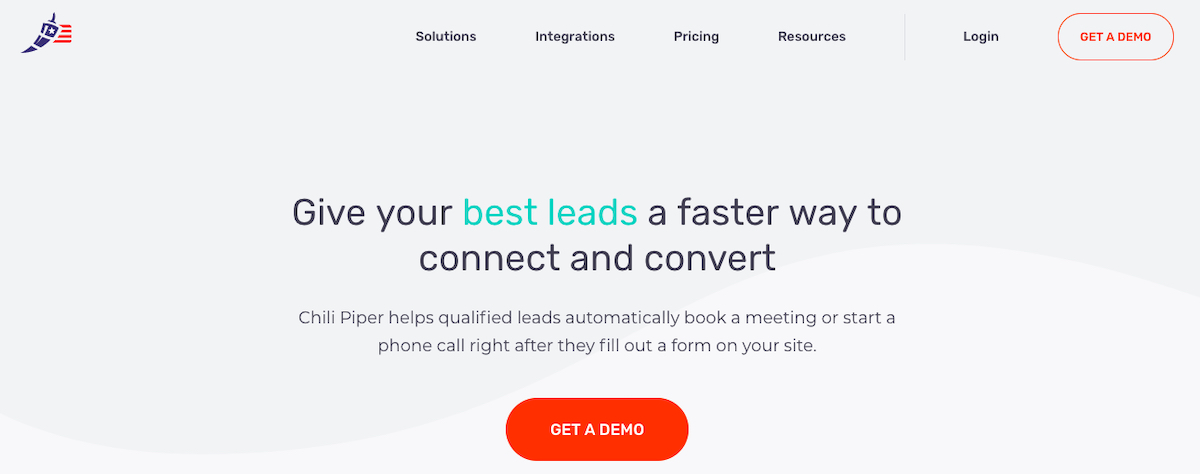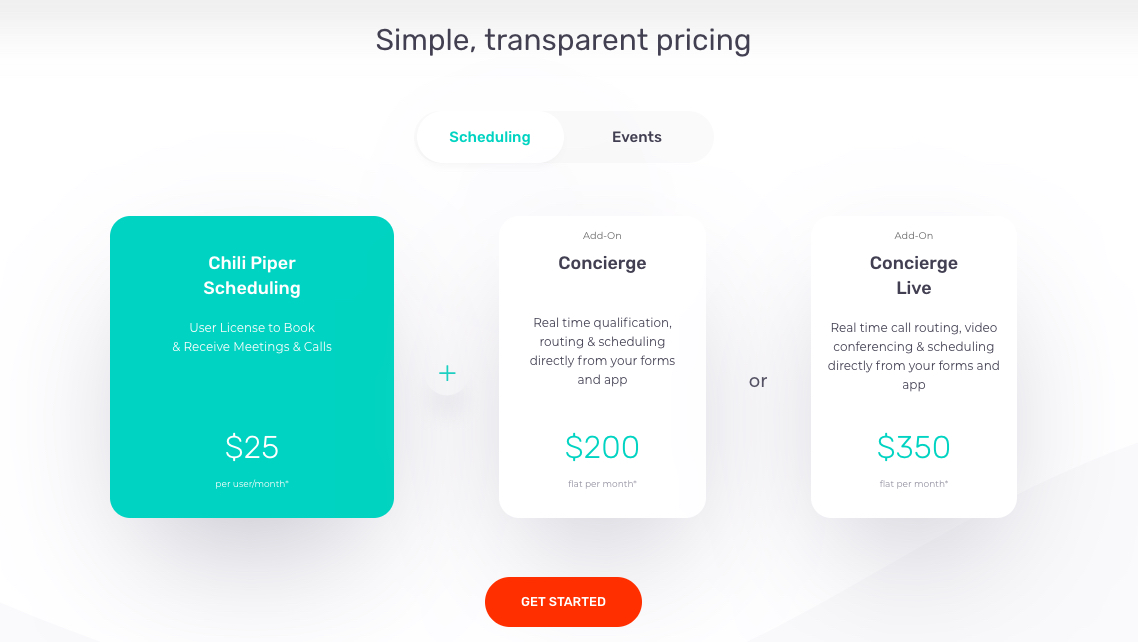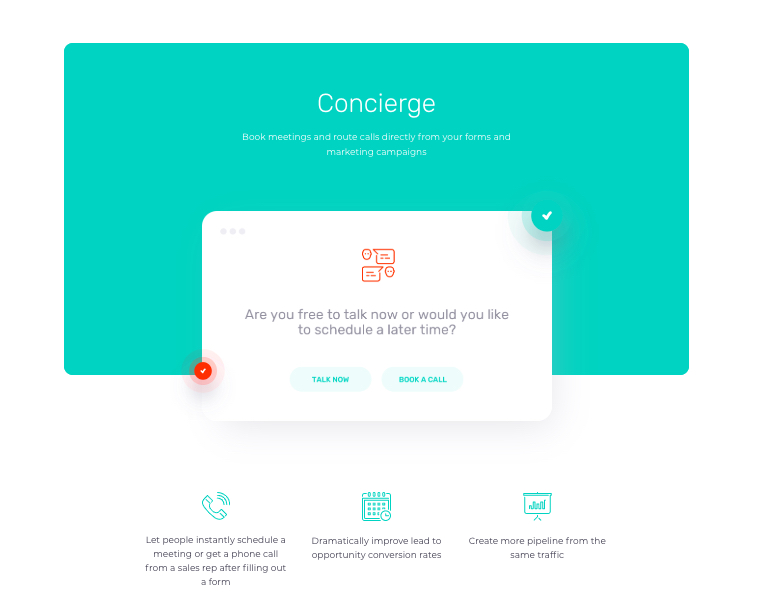Bootstrapping from Idea to $2MM ARR in Three Years
Hello! What's your background, and what are you working on?
Hello, I’m Nicolas Vandenberghe and Iʼm a serial entrepreneur. Chili Piper is my fourth startup. I was born and raised in France and came to the US in the mid-1990s to attend Stanford Business School, where I fell in love with tech entrepreneurship.
Chili Piper is an advanced scheduling platform for B2B companies. Our core product, Concierge, solves a simple problem within the sales pipeline.
Until now, when prospective buyers filled out a form, they often landed on a page with something to the effect of “Thank you, somebody is going to reach out to you shortly,” leaving them wondering who is going to call them and when. No longer. Concierge takes the form data in real time, qualifies the prospect, finds the best representative for the prospect, and triggers a call or presents a calendar instantly, providing a much better experience for everyone. This system and the better experience it produces typically increases conversion rates by 50%.
Weʼre at the $250K MRR run rate and have been doubling every year, so weʼre aiming for $500K MRR in the next 12 months.

What motivated you to get started with Chili Piper?
I wrote a blog post about it. I was CIO of a telecom company where the previous CIO had done a five-year deal with Oracle Enterprise Apps, and Oracle refused to adjust the terms based on our actual (lack of) usage. This was in stark contrast with the efforts cloud-based startups deploy to make their customers happy and successful. It became clear to me that sales and customer relationship management would have to change fundamentally to reflect the new relationship dynamics bleeding over from the startup sphere.
In parallel, I looked at how our own sales representatives were struggling to adopt Salesforce, our CRM tool. Both ends of the equation were failing and it was clearly time for a new generation of digital tools designed to help salespeople better interact with their buyers.
The telecom company I was part of lost its license to operate and I took it as a sign from destiny to go back to entrepreneurship. At the same time, my wife Alina, an expert in UX design, was getting tired of corporate life at companies like Bloomberg and Pearson, so we jumped in together!
We decided to start with a narrow focus: scheduling. A SaaS company in San Francisco came to us with a problem; it was taking seven minutes and a lot of headaches for prospecting teams to book meetings — find the right representative, check her availability, create the invite, and confirm with the prospect. We went to the SaaStr conference and asked companies if they had the same problem, and most of them did. So we created a solution that transformed these seven minutes into three clicks in 20 seconds. Unsurprisingly, that was an immediate hit and we were cash positive just six months later.
We also looked at automating data capture (contacts, emails, meetings) by using smart algorithms to remove the menial data entry work for sales representatives. But several startups had the same idea and Salesforce bought two of them, so that felt a bit too crowded.
What went into building the initial product?
The initial team was comprised of just two engineers and one tester, so five of us in total. My wife and I funded the first few months.
Nowadays, software can be developed incredibly quickly if you have the right talents using the right tools, and we’ve definitely got both. Our two founding engineers have superpowers when it comes to building things out. They selected React.js on the front end and Scala on the backend. It took them four months to build the first product, and the two of them were able to execute our roadmap for the following two years.
To decide on this roadmap, we had a very clear decision process: how much additional money each new feature was going to bring us. That enabled us to bootstrap past 15 employees and $2MM ARR. At that stage, only very recently, we took outside capital and hired more engineers to accelerate our growth.
How have you attracted users and grown Chili Piper?
I closed the first $1MM in revenues myself, mostly through in-person networking. I attended every industry meetup and conference. Chili Piper is in the scheduling business, so I had my Chili Piper link on my iPhone. I would go talk to people, qualify them on the spot, and talk about their scheduling problems. Then Iʼd suggest we have a meeting to talk about our solution, pull out my phone, and say “Letʼs schedule it now, do you have your phone with you?” Everybody has their phone with them, and everybody has their calendar on their phone. Iʼd book up to 15 demos per event.
Itʼs an unusual approach these days when there are so many tools to mass email unsuspecting prospects, but my strategy was much more targeted and intentional. The goal was to sign up the most demanding, and therefore most influential, companies first. Thatʼs how we closed on Greenhouse, Square, Twilio, Intuit, and so on. This generated a flow of inbound interest, enough to justify hiring our first account executives.
This is known as the “bullseye” marketing strategy. In every industry, there are some core influencers. Communication spreads in concentric circles, from these core influencers towards the least connected actors at the periphery. By targeting these core influencers in the bullseye, a company can spread its message at a much lower cost.
We did not spend any money on traditional marketing like advertising or PR. Rather, we hired Customer Success Representatives and focused on getting all these key accounts to green health status. Almost half of our new revenue came from expansion within these accounts in a beautiful snowball effect.
What's your business model, and how have you grown your revenue?
Our business model is very simple; itʼs all subscription based. We charge per user ($25 per month) plus a platform access fee for special features like Concierge or Trade Show management (between $200 and $500 per month).
Weʼre priced very reasonably compared to the competition and relative to the value we bring. This competitive pricing has enabled us to adopt a no-discount policy; every customer pays the same per user. This is very consistent with our vision of the new world of sales based on trust and transparency. It has worked really well in shortening our sales cycle and establishing our brand.
We reached $300K in ARR in our first year in 2016, and $1MM at the end of 2017 on the strength of the bullseye strategy I explained earlier. From there we went to a more traditional enterprise sales model, hiring sales representatives and running prospecting campaigns. That got us to $2M at the end of 2018, and weʼre now on track to double again.
Looking back, we could have grown even faster if we had taken external capital like most companies in our space did. But bootstrapping helped us to develop discipline and drive, and to create a culture that will hopefully play well in the long term.
Going forward, weʼre also going to launch a free version of some of our solutions. The freemium model is actually difficult to make work, which is why weʼve taken our time to get there, but it can be very powerful when done well. The key ingredient is the viral component. At minimum, a free service or product needs to generate word of mouth. In our particular case, providing a free version gets us the holy grail: direct product exposure. By the nature of the product, our customers get their customers to book with our scheduling tools. So we see a lot of potential in this and are excited to see where it takes us.

What are your goals for the future?
We see a huge opportunity to develop the digital tools of the future for customer-facing teams. Companies like Hubspot have grown to multi-billion dollar valuation in our space, and things are just starting to kick off. Weʼre in it for the long term, which includes going public some day.
To get there, weʼre investing massively in research and development. Weʼre building new, innovative products. Our core values are “help, innovate, have fun” — and boy, are we having fun!
What are the biggest challenges you've faced and obstacles you've overcome? If you had to start over, what would you do differently?
Bootstrapping to 15 employees and $2MM ARR was very challenging — entrepreneurship is not for the faint of heart. I had to fund our payroll myself a few times in the beginning. As soon as cash comes in, you want to hire more people to keep growing, so by definition youʼre constantly on the edge of running out of money.
We succeeded by being very focused and unique. We picked a particular problem that we were the only ones to solve; there was no direct competing alternative. This enabled us to set up a no-discount policy, which in turn gave us a strong reputation in the marketplace.
Looking back, we could probably have charged more. Under-pricing is a very common mistake among entrepreneurs. I strongly recommend to always try to start your pricing high, even if you have to settle lower in the end.
Have you found anything particularly helpful or advantageous?
We have a unique competitive advantage: weʼve built the processes and culture to work with a fully distributed team. This enables us to hire the best talent anywhere in the world. We have 32 employees in 28 cities and 12 countries. Our small planet vision is the way of the future.

What's your advice for indie hackers who are just starting out?
I ran the New York City Marathon last year in 4:01. The winner ran in 2:10. So the best professional runner in the world is about twice as fast as me, an amateur.
In software development, the best professional in the world is 200 times faster than the average amateur. So my advice for tech-related entrepreneurs is this: find one of these 200x software geniuses! You donʼt need a team; you need just one or two of the best people out there. Don’t settle. They’re the people that will ultimately bring your ideas to life in the marketplace.
Where can we go to learn more?
You can go to Chili Piper and try Concierge to book a demo with us directly on our site!

Great questions @csallen. Sometimes, because of the day to day grind, we forget to look back and ponder on what worked and what didn't. I'm glad you gave us the ability to pause and reflect